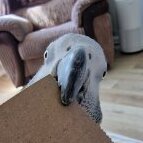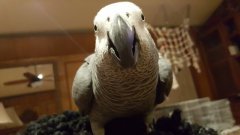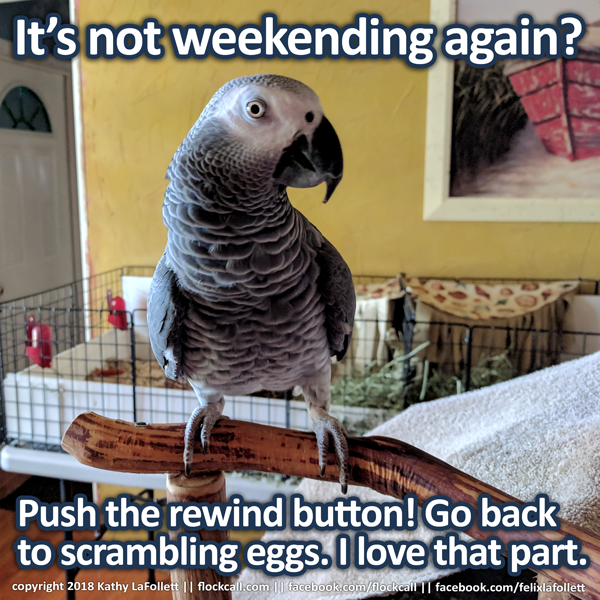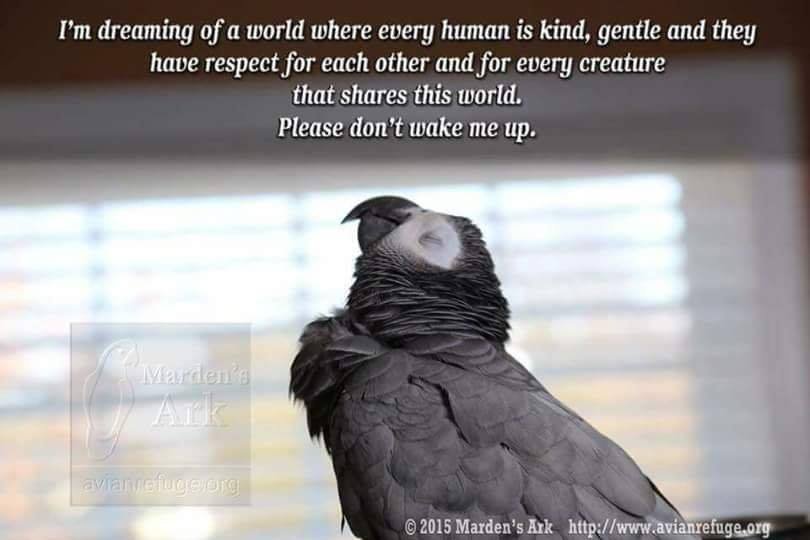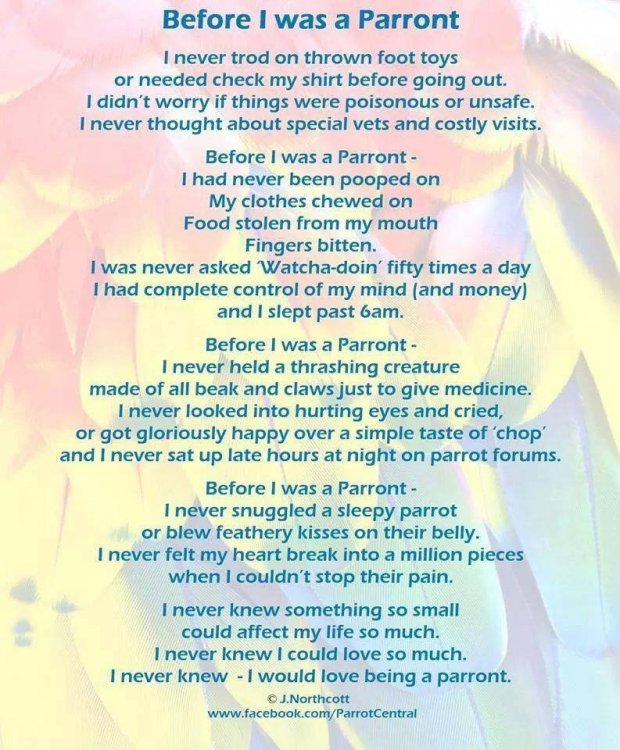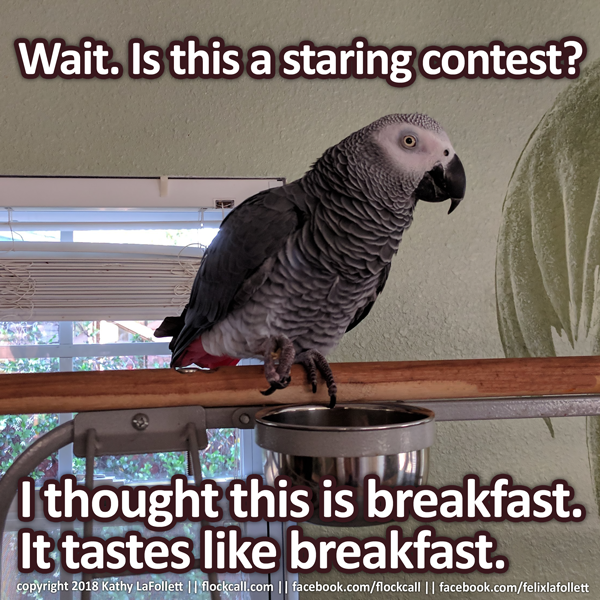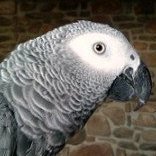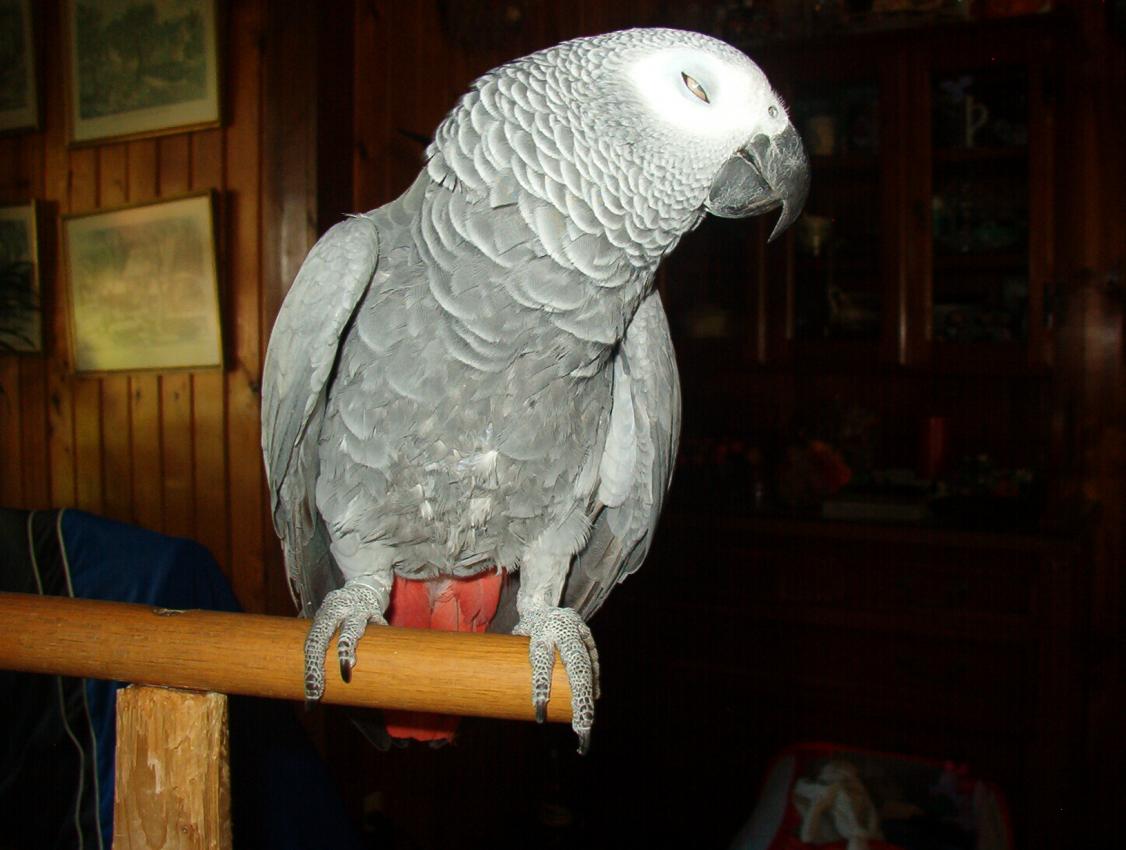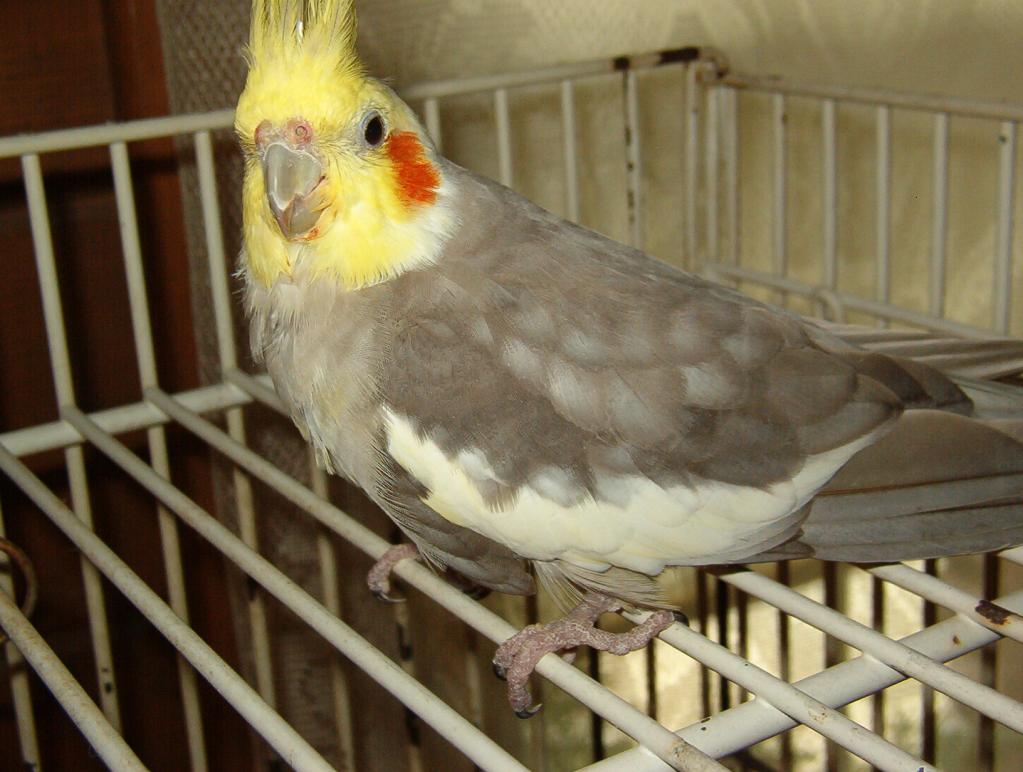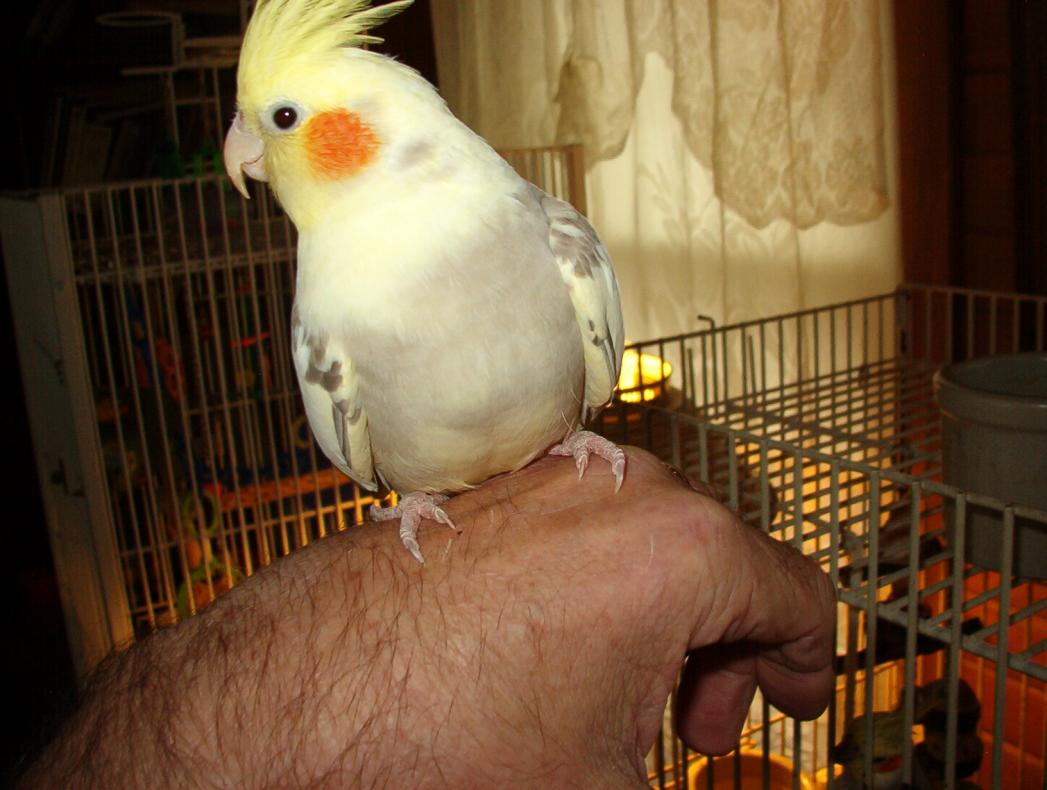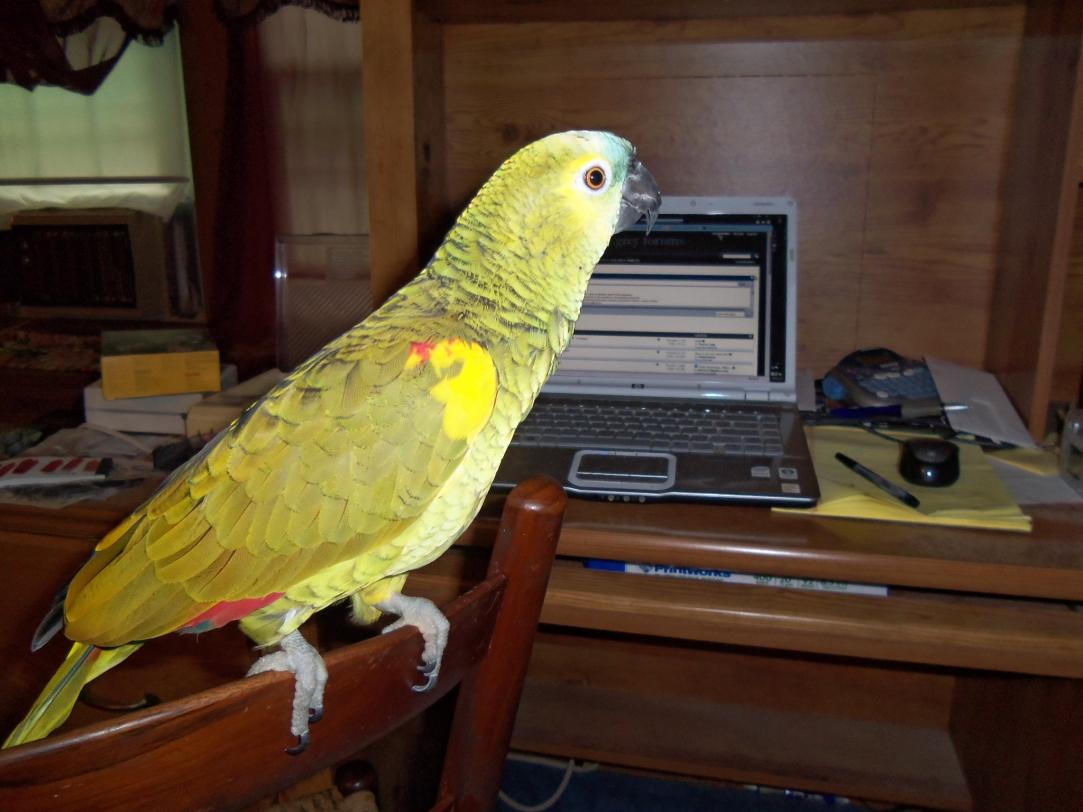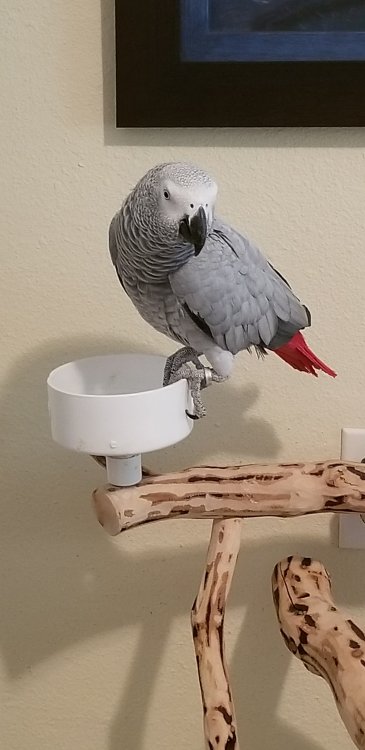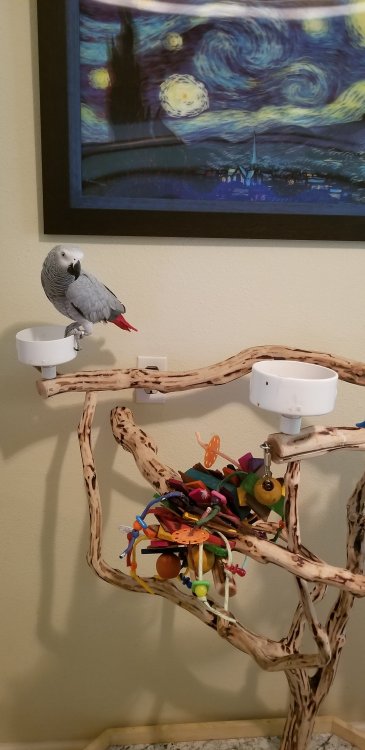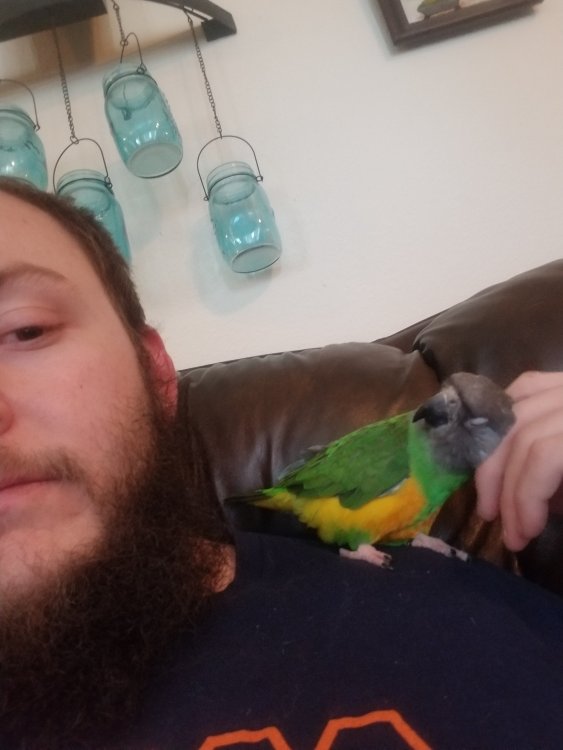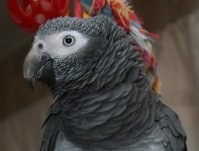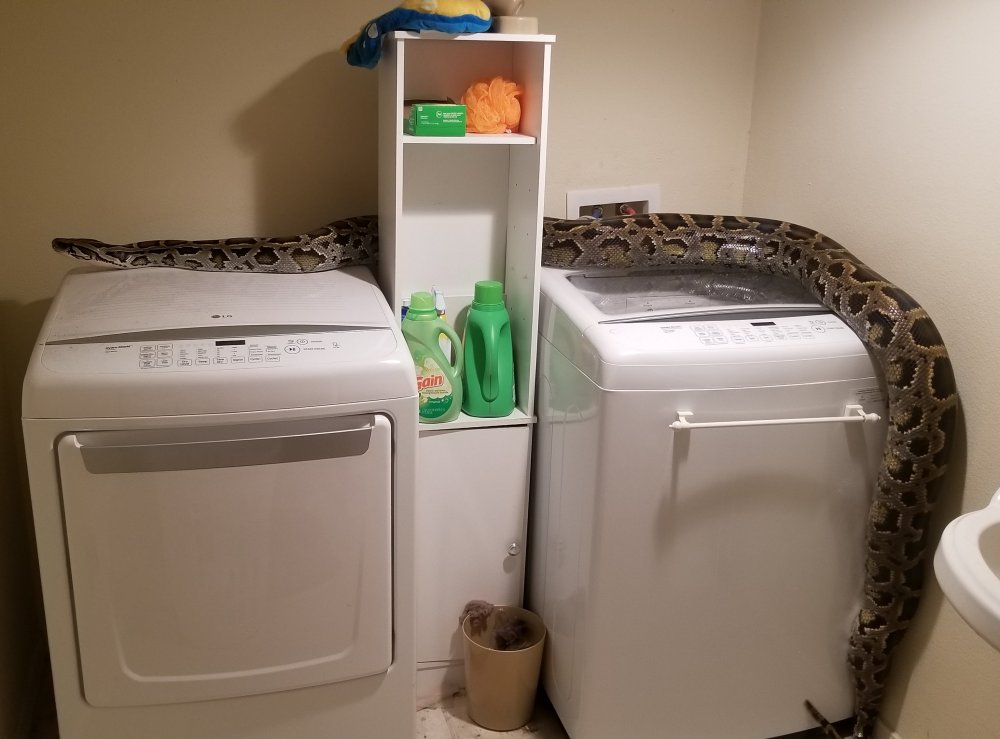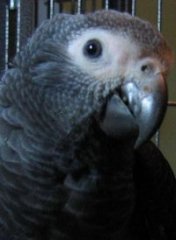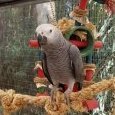NEW ADDRESS FOR MEMBERS GREYFORUMS.ORG
Leaderboard
Popular Content
Showing content with the highest reputation on 05/09/2018 in Posts
-
3 points
-
Clothspins were nothing for Precious except chew toys. She had them off before I could turn around. Sometimes she would wait to take them off during the night then drop them.3 points
-
2 points
-
2 points
-
I would like to put some (small) trees or plants into the aviary I have in my garden. I saw some fruit trees/bushes at a local garden centre recently but wasn't sure if the branches and leaves were safe. They had a selection of blueberry, gooseberry, redcurrant and blackberry. Are any of these toxic to birds? (Branches leaves and/or fruit?) The other thing I need to bear in mind is that the cats will be using the aviary too. And they will also happily chew/play with plants and trees. So I have to be careful that the plants aren't toxic to cats. Similarly, I want to put some tree logs/branches I there for the cats. But need to find something that's suitable for both the cats and Alfie. I have done a few searches but it's difficult to narrow down what might be safe for both..and of course I find different information wherever I look. Is anyone able to make some recommendations about what is bird AND cat safe please?2 points
-
So do you think the branches and leaves would be ok if the cats got at them? One of my cats will eat any plant (I can't have them in the house because they would systematically destroy them!).2 points
-
2 points
-
Wow, that's a big snake, just a reminder in case you don't already know, be sure to wash your hands good if you handle reptiles before you go to your birds, they can carry organisms that will harm your birds. We do have a few members who share a household with both birds and reptiles so maybe they will chime in with suggestions. Personally I am not a fan of snakes, don't want them in my house or anywhere near me but to each his own.2 points
-
2 points
-
2 points
-
Thanks Jayd, that's really useful. I found and checked the aspca one whilst I was looking at the various fruit trees but I cannot find things like blueberry trees in the list- either toxic or non-toxic. I will continue searching as I know my two cats will have a go at anything I put in the aviary, so I need to be careful.2 points
-
Yay! Welcome home Bella! And welcome to Scooter as well! Blimey, you don't do things by half... Taking two parrots in at once?! Haha. Great idea though. If she already knows Scooter as least they can go through all the changes together. They look like they are settling in just fine! Before you know it, you'll never remember life without them! 😂 Also... Wow... I'm not personally a massive fan of snakes so I think I would be a little wary of meeting one that big! Fascinating creatures but I would have to stand a very respectful distance away from him/her!! You know... Close to the nearest exit...! 😁2 points
-
🙂 http://www.plannedparrothood.com/plants.html https://www.aspca.org/pet-care/animal-poison-control/cats-plant-list2 points
-
I haven't seen this and I'm not sure it airs in the UK. Might see if I can find some clips online.2 points
-
Your aviary is amazing! So happy that you managed to get it built despite all the hiccups along the way. I would have loved to build mine off the back of the house but unfortunately the layout of the house and garden didn't suit. So I am going to have fun and games convincing Alfie to get in his travel cage each time I was to get him out there. He likes to give me the run around before eventually relenting and getting in it. 🙄 I'm not sure what to suggest about the neighbours. I wonder if you could invite both neighbours over to discuss the issues and work out a plan with them? Like you say, perhaps work on a timetable when the birds can be outside of that's at all possible? Depends how unreasonable they are I guess. I would hope they would come round to the idea if they know you are willing to work round them at much as is reasonably possible (obviously without too many restrictions on your birds playtime!) Ironically enough Alfie is pretty quiet compared to most birds so I haven't had complaints. I reckon I'd get a complaint about my two Bengal cats before I got a complaint about Alfie. They are extremely vocal cats and also very loud!2 points
-
Thank you for posting this about Alex.He was so very special, an example of all our greys, maybe all our animals? I'd like to say they are smarter than H. sapiens. I just did!!! Sorry to all of you with 190 IQs.2 points
-
OH wow. I would love a Senegal. They have the type of personalities that I LOVE!!!2 points
-
2 points
-
Posted June 7, 2010 100 % NATURAL ALOE VERA JUICE ------------------------------------------------------- Most African Greys and Cockatoos and some other species have extremely dry skin. They have natural dander which allows 75% of their feathers to be water proof. Many people who do bathe their birds feel that the job wasn't thorough and many times, that's true. A completely soaked *to the skin* bath is the ideal but for some, but understandably it's hard to accomplish. For some birds that don't get this type of bath, the dry skin escaltes and can cause itching, irritations which can then cause plucking or chewing of the feathers. Sometimes, a bird might even decide to pull out the whole follicle in which case, the feather/feathers will never grow back. olting is nature's way of getting rid of old feathers that have become useless because they've died and a new set of feathers is ready to replace them. This also applies to flight and tail feathers who have a constant blood supply in them and when that blood supply finally dries up, the flight and tail feather will fall out because those feathers have also reached the end of their life and others are ready to take their place. The loss of flight feathers and tail feathers can't be put into the regular classification of a yearly or bi-yearly molt. Flight and tail feathers die off all year long and when they die off it means the feather is dead. All flight and tail feathers won't fall out at the same time. When a bird goes through a regular molt all other feathers do fall out at the same time. For many birds whether they have skin/feather problems or not, periodically using Aloe Juice will solve a few problems concerning skin but it'll have no effect on whether a bird has a good or bad molt. Nature is telling the parrot's body to shed feathers in order for new ones to grow in. Using Aloe Juice or water will never get rid of dander permanently. It doesn't matter how successful the bath is or the use of the juice is. Molting is a neccessity and the dust whichis called dander provides natural feather protection. 100% NATURAL ALOE VERA JUICE is usually sold in 1 gal. Jugs and can be obtained at major pharmacy outlets including Dept. Stores that have a large pharmacy area such as Walmart. The price ranges from approx $7 to $9 depending on where it's bought. Using Aloe Juice -------------------------- I find that the best method for using this product is through a mister/sprayer. The juice can be cold or room temperature. I prefer cold so I store the jug in the fridge and just pour it into the mister. There's been discussion about percentages of juice to water. I prefer full strength and I know it can't harm the birds. I've used it full strength for years. The choice is yours. The most important parts of a grey's body that should be thoroughly soaked are 1--the inner part of the wing where it meets the body. That body area should be sprayed very well. 2--all over the breast area starting from the neck all the way down to the vent area. All of the above areas aren't water proof so the juice should soak in immediately 3--the feathers covering each leg. 4--the base of the upper neck /lower back of the head. I fill a mister with the fluid and start misting the breast area. I stand about 10 to 12 in away. The closer you are to the bird, the better it is for the bird. Using a mister close up doesn't disturb a bird as much as if the mister was farther away. Usually, the bird tries to bite the nozzle which is to be expected. They'll do the same thing with a water mister. In order to Soak the bird down under the wing area, I turn the nozzle to squirt with the bird facing me, I squirt in between the wings and the body. It quickly works it's way in. In stead of using full pressure on the trigger, I use 1/2 squirts so that the shock of getting hit with the squirting action is greatly minimized. Some birds will actually open up their wings and let the fluid through. Not surprisingly, the majority of birds don't though. The best time to use aloe is after a bath because it has no effect on the outer feathers because the flight, tail and covert feathers are all waterproof. Plain water which used in misters, baths or showers is the best way to remove dander which sits on the the outer feathers. Using Aloe Juice softens and makes the skin extremely supple. Normally, a grey or TOO will sit quietly after being bathed until nature tells it that it's time to preen which might take more than an hour. Depends upon the bird.. PS---I also keep a small bottle of 100% PURE ALOE VERA GEL around in case of periodic irritations on the legs I.e.--raw spots, dry scales and intense picking. I also use it for minor thin spots on the body that can happen during molting season. A little dab and it immediately is absorbed by the leg or body. Think about purchasing and keeping that product around besides the aloe juice. You can compare the gel to a first aid cream that people always have around for themselves. Neither of these items are harmful to the bird. The juice, if accidently ingested won't hurt the bird because neither item is toxic. The gel immediately sinks into ares where it's used. People also drink Aloe Vera juice when they have intestional problems such as ulcers and digestive problems --------------------------------------------------------------------------------------------------------------======================================================= Please don't click rewards for me, this is Dave's post. Jayd1 point
-
Hi, Berry are hard to grow, and if they lose their blossom , no fruit.....1 point
-
Hi, berry are grown on vines and sometime bushes.. https://www.bhg.com/gardening/container/plans-ideas/berries-in-containers/ https://pets.thenest.com/blueberries-safe-cats-8730.html1 point
-
Does anyone watch Animal Cribs on Animal Planet? I am hooked. Did you see the episode of the Parrots rescue? That’s my dream set up...it’s a great show, if you haven’t seen it, I highly recommend it. ?1 point
-
1 point
-
1 point
-
She's home! And as you can see we adopted another little one. Scooter is a Senegal parrot, she lol, is 16 years old and was one of a handful that survived a house fire. She came from the same people that had Bella and the two have known each for the past 6 years. Bella is still getting used to everything. She freaked out when I opened the door and took a dive off her stand. She slightly bent a tail feather. She isn't bothered by it, not throwing off her balance or anything so I think I'm good. I'll keep you guys updated know she's actually home!1 point
-
1 point
-
Alex the parrot is the only non-human to ask the existential question- “What color am I” Nov 27, 2016 Tijana Radeska Alex the parrot Alex was an African parrot born in 1976. He became famous for being the subject of a psychological experiment at three universities – University of Arizona, Harvard and Brandeis University. His uniqueness not only regarded his ability to learn names of individual objects but also identify the objects and their colors regardless of their shape. In 1977, Irene Pepperberg, a scientist, animal psychologist and professor at Brandeis University and Harvard University, bought the one-year-old Alex from a pet shop. At the time; she wanted to test if primates with bigger brains can handle complex problems related to language and understanding – a belief that didn’t include birds. African gray parrots, three weeks old Pepperberg named the parrot Alex who is an acronym for avian language experiment or avian learning experiment. She was aiming to test the bird’s intelligence and the experiment lasted for thirty years, until Alex’s death. According to Pepperberg, Alex had shown intelligence of a five-year-old human and the emotional level of a two-year-old human, and he didn’t even reach his full potential by the time he died. In her research, Pepperberg argued that if the intelligence of a single bird can be compared to the ones of dolphins and great apes, then birds are animals with creative potential for using words. African gray parrot from Gabon. Photo credit Or maybe Alex was an extraordinary bird who learned over 100 words. Maybe he didn’t learn them mechanically but rather creatively with an ability to understand what he said. When asked about the shape, color or material of a certain object, Alex could give a precise description. After he had learned the name of a certain object, Alex’s understanding of that particular object was tested by being exposed to the same one but in different shapes and colors. For example, when he was shown keys in different sizes, shapes, and colors, Alex had no problems with identifying the object. African gray parrot from Congo When he was put in front of a mirror, Alex inquired the answer to the first existential question ever asked by an anima – “What color?” – referring to himself. He had learned that his color is gray after being told six times. Until today, Alex is the only animal which posed a question about itself. Or, as it has been assumed by some scientists, he was just lucky to ask “irrational” question at the right moment. Here is another fun read from us:Medieval animal trials in Europe – A pig sentenced to death by hanging for murder Alex died suddenly in 2007, at the age of 31. African gray parrots live an average life of sixty years, so Alex’s death was a surprise for everyone, particularly as he was in good health at the time. Pepperberg stated that it is a huge loss, but it wouldn’t stop the research. On the contrary, she claimed that it would be a setback. The lab has two other birds, yet not as comparable to Alex.1 point
-
You're very fortunate. This neighbor has harbored ill feelings regarding my birds for a very long time. The aviary pushed her over the edge with negative energies aimed towards us. It's similar to a stopped up garbage disposer. Once it finally gets going, all the garbage blows out the top.1 point
-
I may have to send my neighbor flowers after reading this. She was worried she wouldn't get to see my birds anymore once I built the new house-attached aviary.1 point
-
1 point
-
1 point


